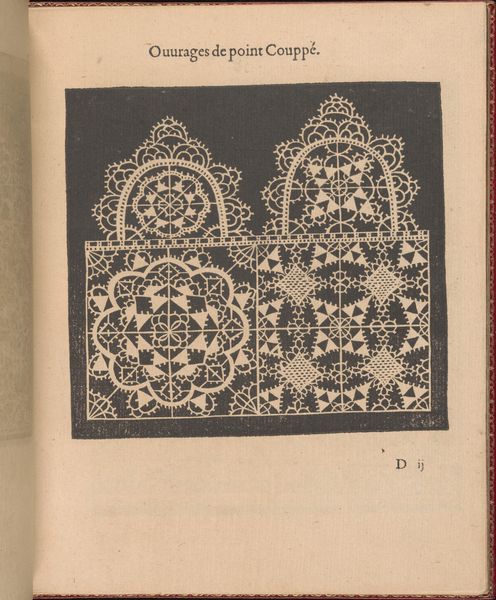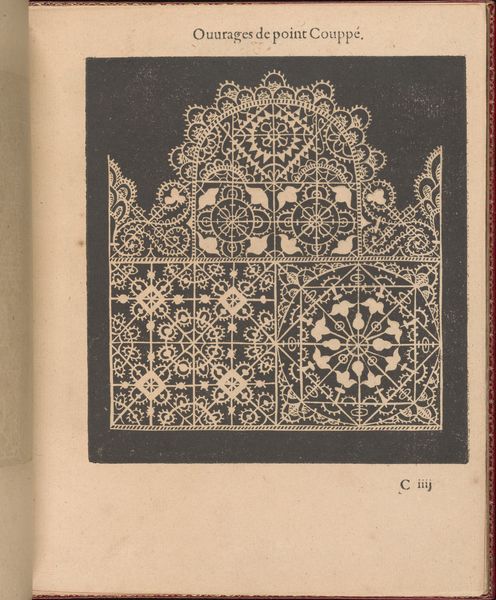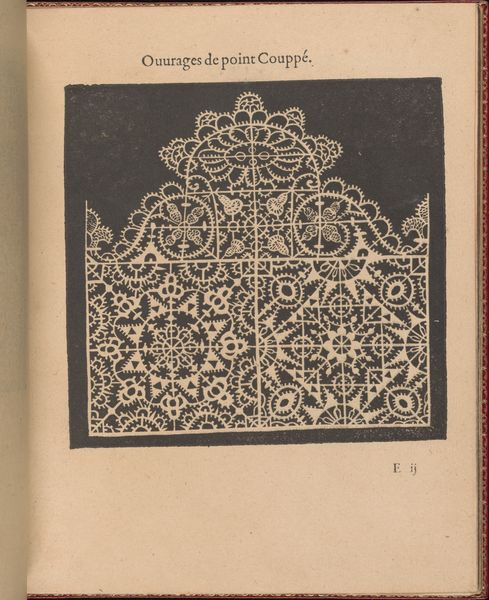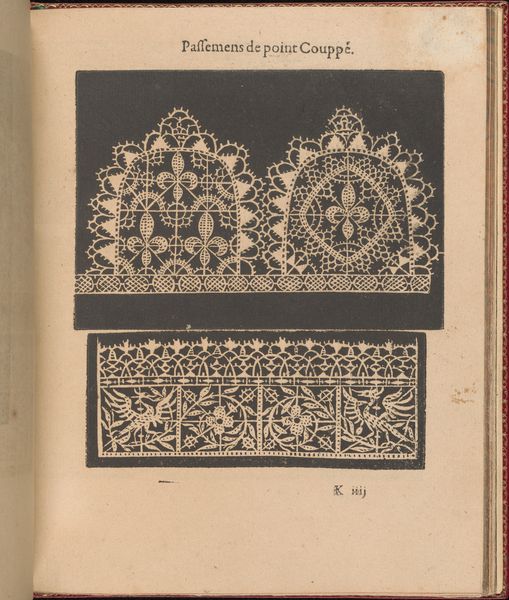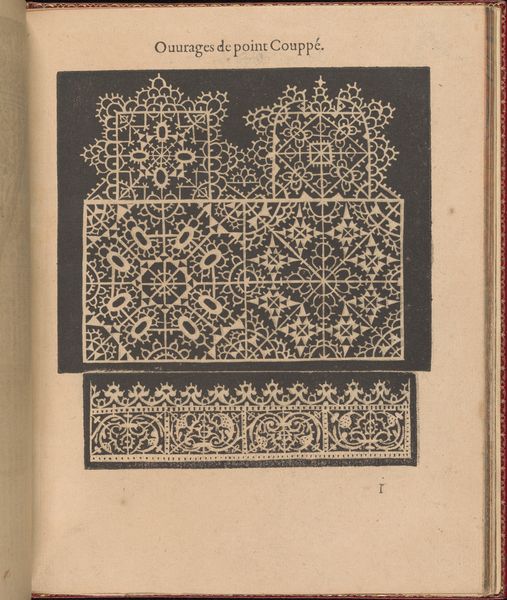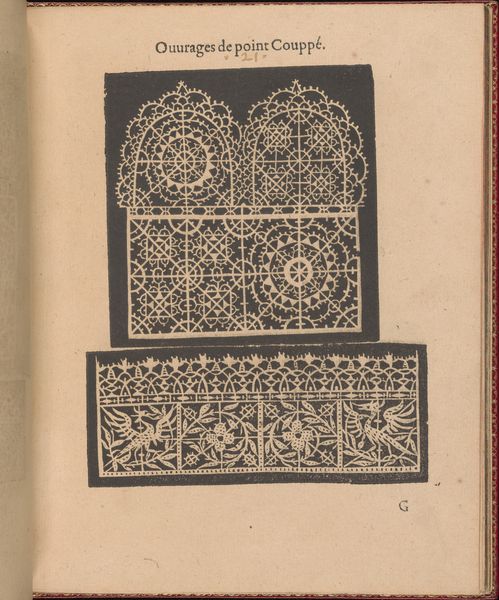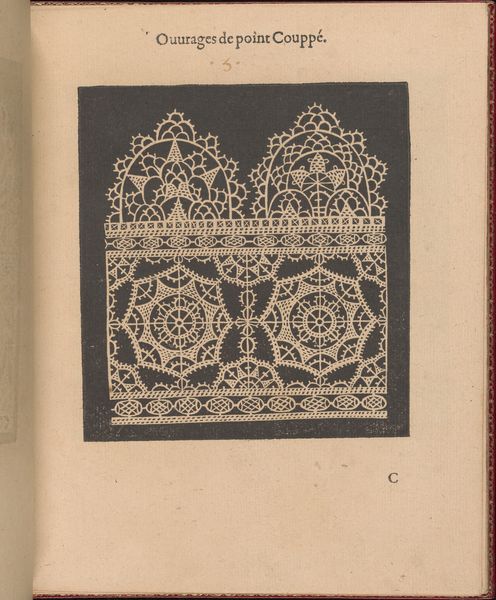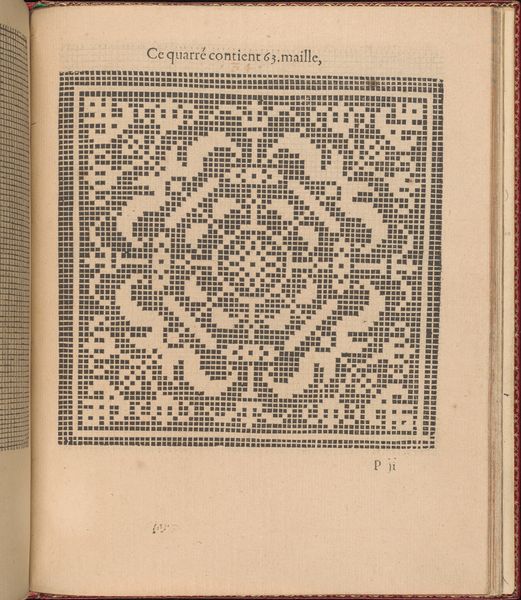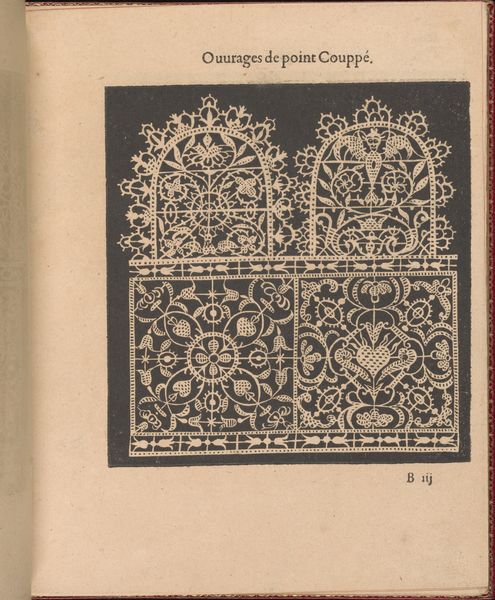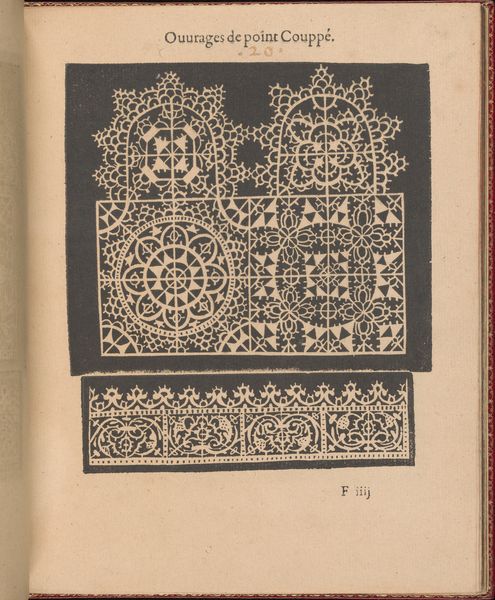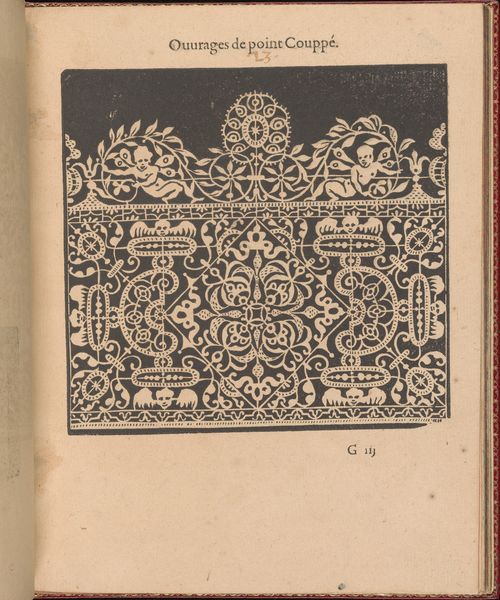
Les Singuliers et Nouveaux Portraicts... page 11 (recto) 1588
0:00
0:00
drawing, print, engraving
#
drawing
# print
#
11_renaissance
#
engraving
Dimensions: Overall: 8 1/16 x 6 5/16 in. (20.5 x 16 cm)
Copyright: Public Domain
Curator: This image before us comes from Federico de Vinciolo's "Les Singuliers et Nouveaux Portraicts…," specifically page 11 recto. It was created in 1588 and features engravings of various lace patterns. Editor: My first impression is that the precision here is astounding. The shapes appear so delicate, almost ephemeral, yet the black and white contrast gives them a graphic boldness. Curator: Absolutely. Vinciolo's work wasn't just about aesthetics; it was hugely influential in disseminating lace patterns across Europe. These books played a vital role in standardizing designs, fostering both national and international styles in textiles. Editor: I find the geometry here so compelling. The rosettes, the squares—they resonate with a deep-seated human need for order, don’t you think? It almost feels like looking at a series of alchemical symbols, each design containing some hidden meaning. Curator: I would add that the rising popularity of this 'point Couppé', cutwork lace, directly correlates with sumptuary laws of the era. It gave the appearance of wealth and embellishment without the use of more costly metallic threads. There was also intense competition between Venice and France during the time period; these books became marketing and style-making machines! Editor: Indeed, those geometric elements strike me as particularly powerful. The lace, far from being just a decorative trim, embodies ideas about status, innovation, but also a sense of vulnerability. That lace, as pretty as it is, is prone to unraveling at any moment... a reminder of fragility. Curator: Well said. The rise of printed pattern books made skills in lacemaking more accessible but also altered the socio-economic dynamic for women and artisans across Europe. Suddenly, style was democratized – if you could afford the book, you could participate. Editor: Reflecting on this work, I'm struck by how objects seemingly so utilitarian carry these encoded cultural fingerprints that speak volumes about those who created and used them. Curator: I concur. It serves as an example of the deep connection between commerce, social practice, and design in the Renaissance world.
Comments
No comments
Be the first to comment and join the conversation on the ultimate creative platform.

